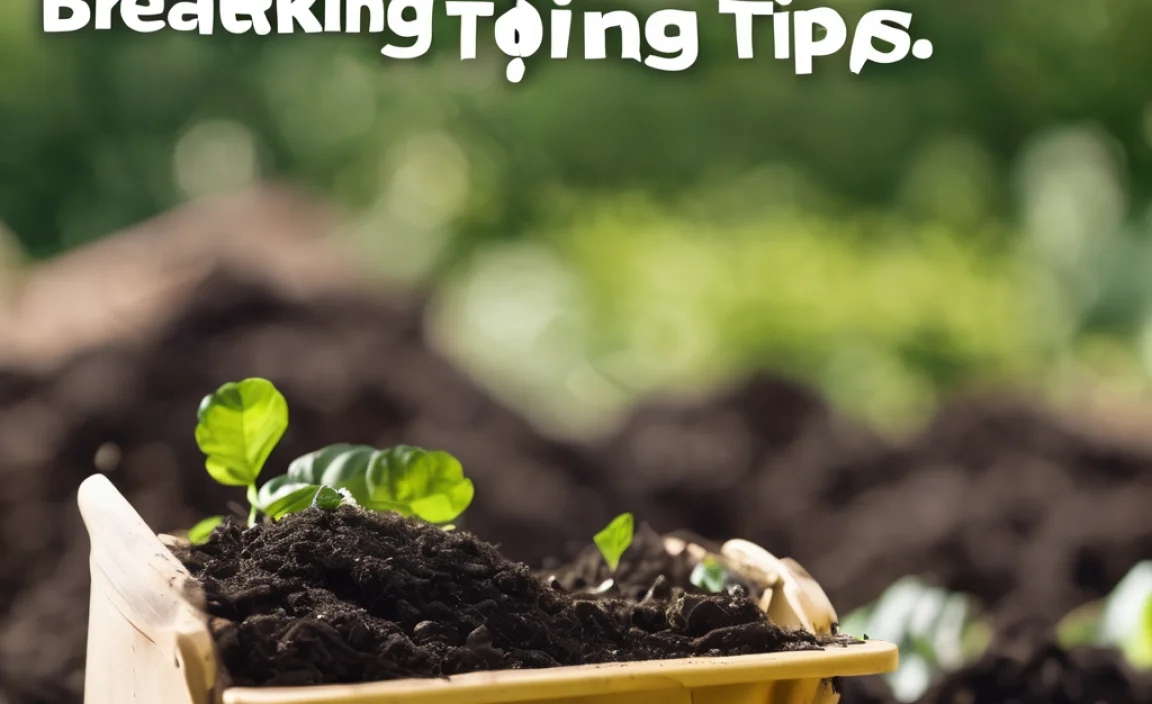Ever wonder what magic transforms your kitchen scraps and yard waste into rich, dark compost? It’s not just a mystery of nature; it’s a bustling metropolis of tiny, invisible workers! These are compost enzymes, and they’re the unsung heroes of decomposition. If your compost isn’t breaking down as fast as you’d like, or if you’re just curious about this amazing process, you’re in the right place. We’re going to peek behind the curtain and see how these “bug wonders” work their magic.
What Exactly Are Compost Enzymes?
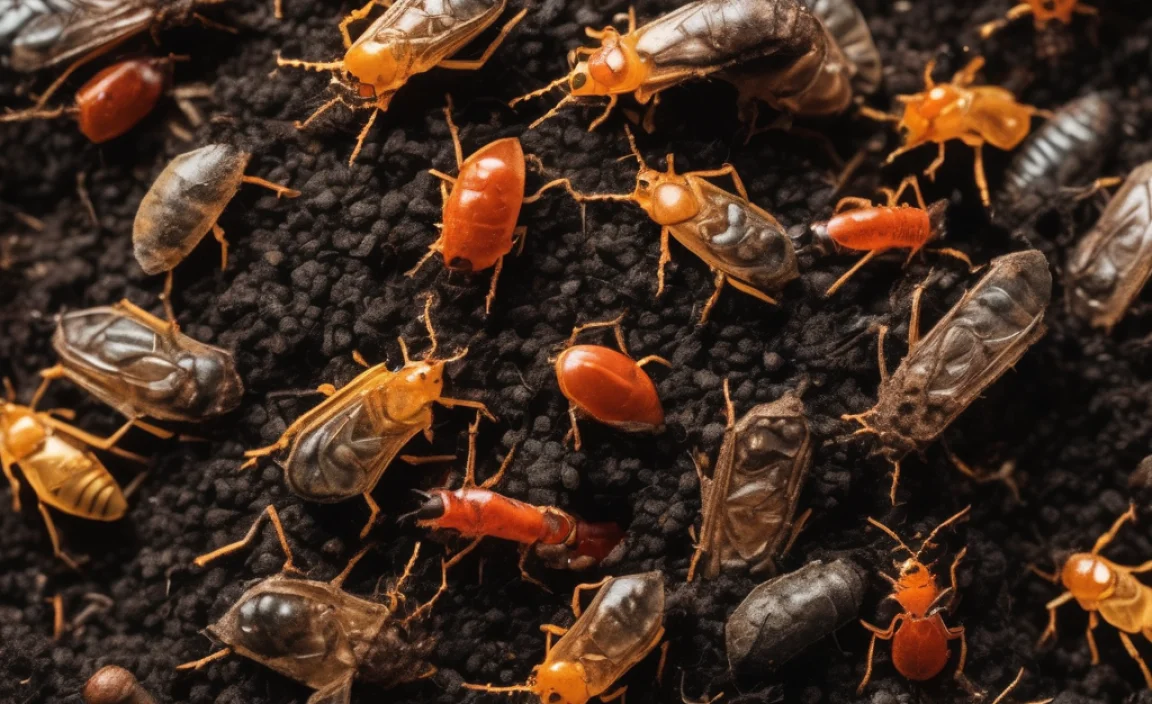
Think of enzymes as tiny biological scissors. They are special proteins made by living organisms – in our case, primarily microbes like bacteria and fungi – that speed up chemical reactions. In the world of composting, their main job is to break down complex organic materials into simpler forms that can be absorbed by these microbes. Without enzymes, decomposition would be an incredibly slow process, taking years to turn a fallen leaf into soil-ready nutrients.
These enzymes are released by the decomposers themselves into the compost pile. They go to work on the bits of food and plant matter, chopping them up into smaller pieces. This makes it easier for the microbes to “eat” and digest the material, thereby accelerating the composting process. It’s a symbiotic relationship: the microbes produce enzymes to break down the food, and in doing so, they create more food for themselves.
Types of Compost Enzymes
There are several key enzymes that play crucial roles in composting. Each one targets specific types of organic compounds found in our compostable materials.
- Amylases: These enzymes break down starches, which are complex carbohydrates found in things like potato peels and leftover bread. They turn these long starch chains into simpler sugars that microbes can easily consume.
- Proteases: These enzymes tackle proteins. Think of things like grass clippings (which contain protein) or even small amounts of food scraps. Proteases break down proteins into amino acids, which are the building blocks for new life.
- Lipases: These are the fat-busters! Lipases break down fats and oils, which can be tricky to compost. They convert these into fatty acids and glycerol, making them accessible to microbes.
- Cellulases: This is a big one, as cellulose is a major component of plant cell walls. Common materials like leaves, twigs, and paper are full of cellulose. Cellulases break down cellulose into simpler sugars, which are then readily consumed by decomposers.
- Pectinases: Pectin is another component of plant cell walls, often found in softer materials. Pectinases break down pectin, helping to further soften and break down plant matter, especially in the early stages of decomposition.
The Microscopic Workforce: Who Makes the Enzymes?
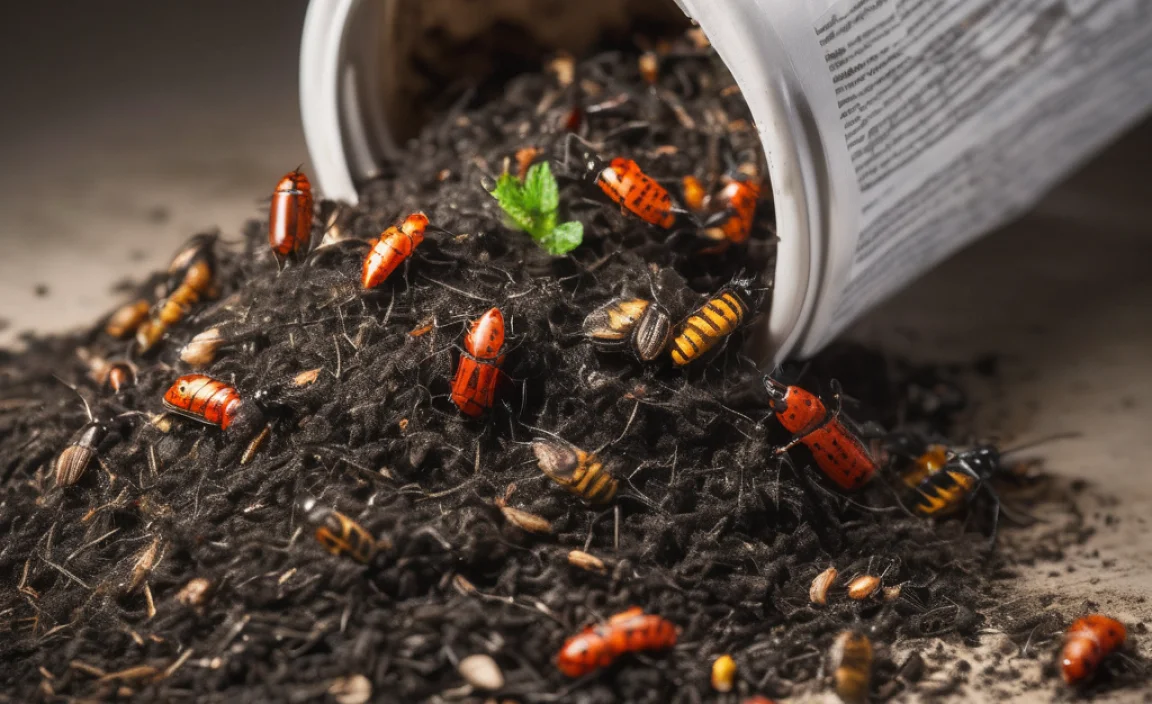
The stars of the enzyme show are the microorganisms. These are the microscopic beings that thrive in your compost pile and do all the heavy lifting (or rather, the “breaking down”).
Bacteria
Bacteria are among the first responders in the composting process. They are prolific, diverse, and incredibly efficient at breaking down simple organic materials like sugars and starches. Different types of bacteria specialize in different tasks, producing specific enzymes to tackle their preferred food sources. They love warm, moist, and oxygen-rich (aerobic) conditions, which is why proper compost management is so important.
Fungi
Fungi, especially molds and yeasts, come in a bit later or work alongside bacteria. They are particularly good at breaking down tougher materials like lignin and cellulose – the woody parts of plants and tougher plant fibers. Their thread-like structures (hyphae) can penetrate these tougher materials, secreting enzymes externally to break them down before absorbing the nutrients. This is why a healthy mix of “greens” and “browns” in your compost is so vital; fungi help break down those stubborn browns.
Other Microorganisms
While bacteria and fungi are the primary enzyme producers, other microscopic creatures also contribute. Protozoa and nematodes, for example, consume bacteria and fungi. While they don’t produce many composting enzymes themselves, their consumption of microbes helps to break down organic matter as well and releases nutrients back into the system.
How Enzymes Speed Up Composting
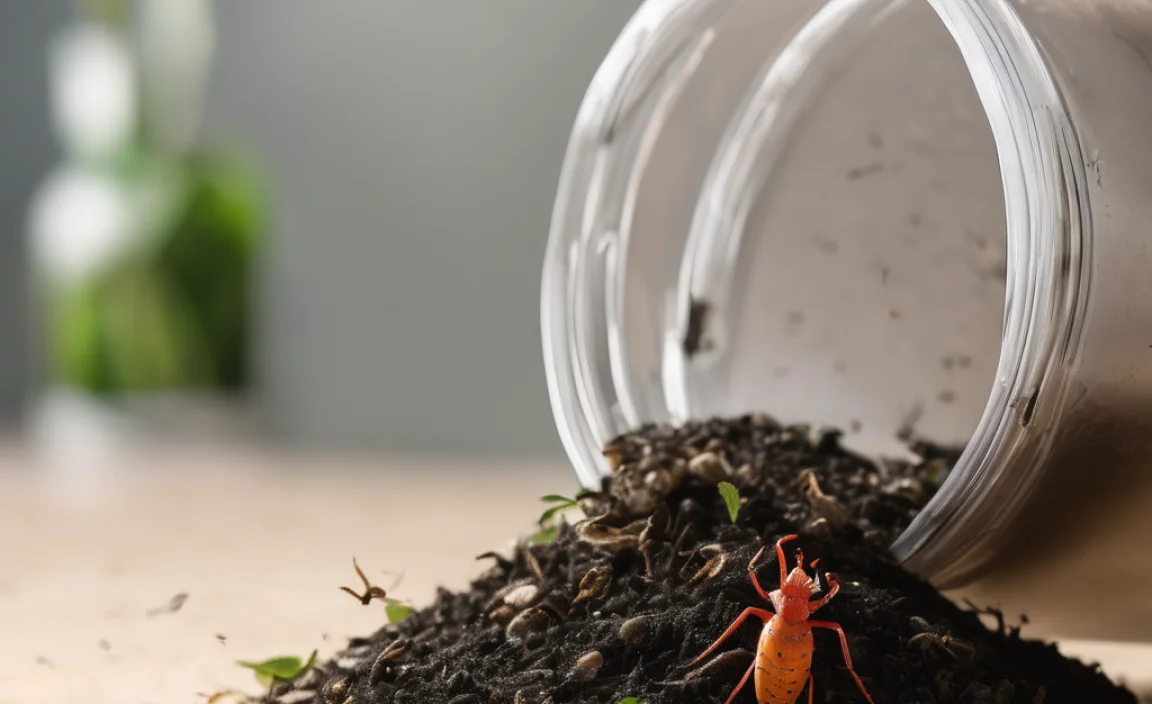
Imagine trying to eat a whole apple. It’s tough and takes a lot of chewing. Now imagine if someone pre-cut the apple into tiny pieces – much easier to eat, right? Enzymes do this for the organic matter in your compost pile. They are the pre-cutters.
- Initial Breakdown: When you add materials like vegetable peels or grass clippings, they are relatively complex. Enzymes are released by microbes and break down these complex molecules into smaller, simpler ones (like sugars, amino acids, and fatty acids).
- Nutrient Accessibility: These simpler molecules are now “food” that the microbes can easily absorb through their cell walls.
- Microbial Growth: As microbes consume these simple nutrients, they grow and multiply, further contributing to the breakdown process. More microbes mean more enzyme production.
- Heat Generation: The rapid biological activity of microbes feeding on easily accessible compounds generates heat. This heat is crucial for thermophilic composting, which breaks down pathogens and weed seeds, and also contributes to the speed of decomposition.
- Further Decomposition: As the more easily digestible materials are consumed, microbes and their enzymes begin to tackle more resistant compounds, continuing the cycle until the material is fully composted.
Essentially, enzymes create readily available food sources for the composting microbes. This fuels their activity, leading to faster breakdown, heat generation, and ultimately, rich compost.
Factors Affecting Enzyme Activity in Your Compost
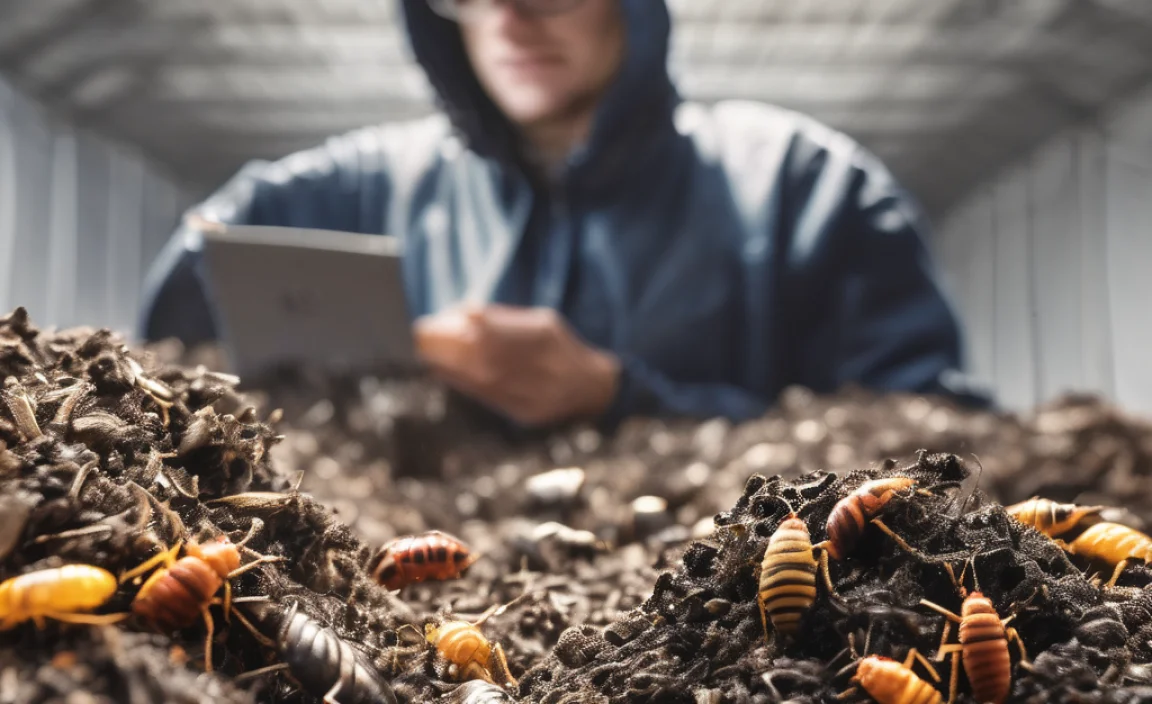
Just like any living organism or biological process, enzyme activity depends on its environment. Several factors in your compost pile can either boost or hinder enzyme function.
Moisture
Microbes need water to survive and function, and so do the enzymes they produce. Enzymes work best when dissolved in water. A compost pile that is too dry will significantly slow down enzyme activity and, consequently, the composting process. On the other hand, a pile that is waterlogged (too wet) can become anaerobic, favoring the wrong kinds of microbes and potentially leading to foul odors. aiming for the consistency of a wrung-out sponge is usually ideal.
Temperature
Enzymes have optimal temperature ranges in which they work most efficiently. The thermophilic (heat-loving) bacteria that thrive in hot compost piles produce enzymes that are very active at higher temperatures, often between 130°F and 160°F (55°C to 70°C). As the pile cools, mesophilic (moderate-temperature) microbes and their enzymes take over and continue the work. Extreme cold can slow everything down, while excessive heat (above 160°F) can actually denature, or destroy, some enzymes and kill the microbes that produce them.
Oxygen (Aeration)
Most of the enzyme-producing microbes are aerobic, meaning they need oxygen to live and work. When you turn your compost pile, you’re introducing fresh oxygen. This allows aerobic bacteria and fungi to thrive and continue producing the enzymes needed for efficient decomposition. Without enough oxygen, anaerobic microbes can take over. While they can decompose matter, they are often slower and can produce unpleasant odors.
pH Level
The pH of your compost pile also affects enzyme activity. Most composting microbes prefer a slightly acidic to neutral pH, generally between 6.0 and 7.5. Significantly acidic or alkaline conditions can inhibit the growth of beneficial microbes and reduce the effectiveness of their enzymes. Adding too many acidic “greens” like citrus peels or high-nitrogen materials can sometimes lower the pH, while too many “browns” might raise it. A balanced mix helps maintain a favorable pH.
Carbon-to-Nitrogen Ratio (C:N Ratio)
The balance of “greens” (high nitrogen) and “browns” (high carbon) is critical for providing the right food sources for the microbes. Different microbes and the enzymes they produce excel at breaking down specific compounds. A good C:N ratio (ideally around 25:1 to 30:1 by dry weight) ensures that microbes have a readily available supply of both energy (from carbon materials) and building blocks (from nitrogen materials) to fuel their enzymatic work.
What About Commercial Compost Accelerators?
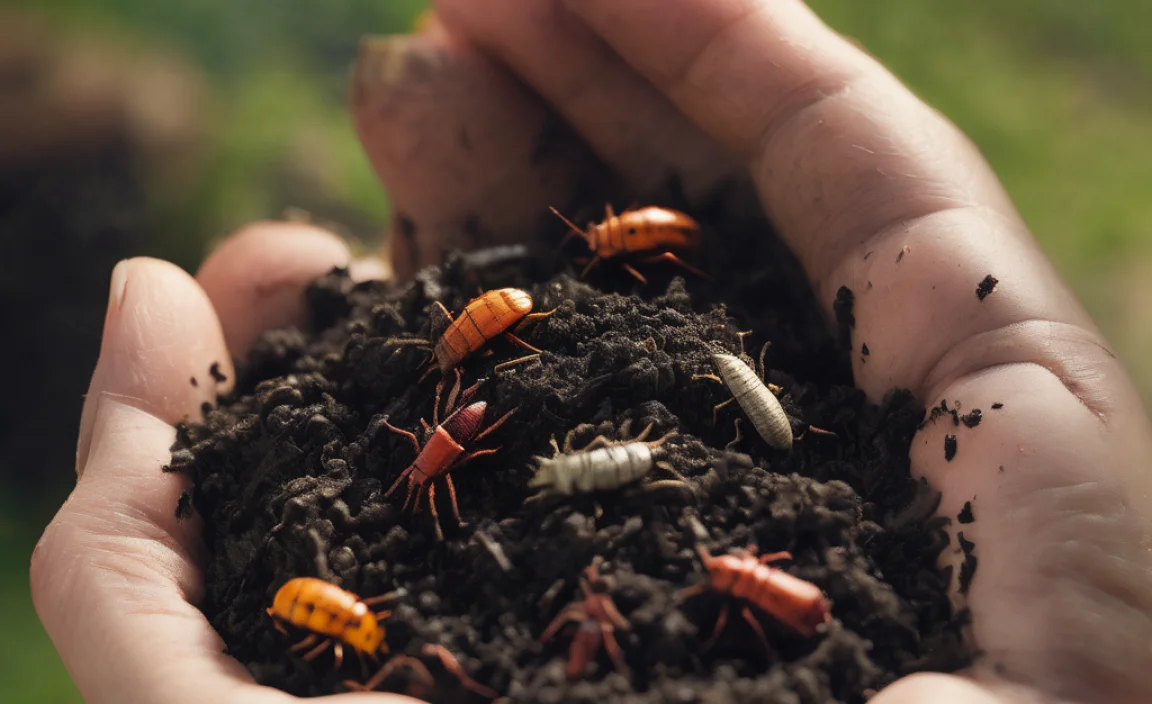
You might have seen compost accelerators or activators on shelves at your local garden center. These products often contain a blend of beneficial bacteria, fungi, and sometimes pre-made enzymes. The idea is to “seed” your compost pile with a robust workforce and enzymes to kickstart the decomposition process.
Do They Work?
For beginners, or for those with challenging compost ingredients, these accelerators can be helpful. They can introduce a diverse range of microbes and potent enzymes that might already be present in a well-established, mature compost pile. They can indeed speed up the initial breakdown phases, especially if your pile is lacking in microbial diversity or if you’re trying to compost tougher materials.
When Might You Not Need Them?
However, if you maintain a well-balanced compost pile with the right mix of greens and browns, good moisture levels, and adequate aeration, you likely don’t need to buy activators. A healthy compost pile will naturally attract and cultivate the necessary bacteria and fungi, along with their enzyme-producing capabilities. Think of it as building your own thriving microbial city rather than buying pre-fab homes.
Making Your Own “Activator”
A great way to create a natural compost starter is to add finished compost or good garden soil to your new pile. This introduces a ready supply of beneficial microbes and enzymes. A handful of finished compost is like a super-shot of the right bugs and their tools!
Troubleshooting: When Composting Slows Down
If your compost pile seems stagnant, it’s often a sign that enzyme activity is low. Let’s look at some common issues and how to fix them.
| Problem | Possible Cause (Enzyme Related) | Solution |
|---|---|---|
| Pile is not heating up | Lack of readily available food (simple sugars/proteins for early breakdown) or insufficient microbial population producing enzymes. | Add more “green” materials (food scraps, grass clippings). Chop or shred materials to increase surface area for enzymes. Add a shovel-full of finished compost or garden soil to introduce microbes. |
| Pile smells foul (rotten eggs, ammonia) | Anaerobic conditions mean the wrong microbes are working, and/or pH is too low/high, hindering beneficial enzyme production. | Turn the pile to introduce oxygen. Add “brown” materials (straw, shredded cardboard) to absorb moisture and improve aeration. If ammonia smell, add more carbon materials. |
| Materials are not breaking down over a long time | Pile is too dry, preventing enzyme dissolution and microbe activity. Or, the material is too tough and requires specific enzymes (e.g., cellulose/lignin) that haven’t been sufficiently produced. | Add water and thoroughly mix. Ensure a good mix of greens and browns, especially materials high in cellulose and lignin for fungi to break down. Chop or shred larger materials. |
| Slimy or mushy texture | Pile is too wet, leading to anaerobic conditions and potentially imbalanced enzyme production. Or, too many easily decomposed materials have been added too quickly. | Introduce dry, carbon-rich “browns” like straw, wood chips, or shredded paper to absorb excess moisture and improve aeration. Turn the pile. |
| Insects are a nuisance (flies, gnats) | While not directly enzyme related, uncontrolled decomposition due to lack of beneficial microbial action can attract pests. Food waste exposed on the surface. | Bury food scraps deep within the pile. Maintain proper moisture and aeration so decomposition is efficient and doesn’t attract pests. Cover exposed food scraps with a layer of browns. |
How to Encourage Healthy Enzyme Activity
So, how do we make sure our compost pile has a happy, enzyme-producing workforce? It all comes down to creating the right conditions.
1. Balance Your Greens and Browns
This is the golden rule of composting. Greens (nitrogen-rich) provide the protein for microbes, while browns (carbon-rich) provide the energy. A good mix ensures a diverse microbial population with the ability to produce a wide range of enzymes. Aim for roughly equal volumes of greens and browns, or a bit more browns.
2. Get the Moisture Right
As we discussed, enzymes need water to work. Keep your compost pile consistently moist, like a wrung-out sponge. If it’s too dry, enzymes can’t dissolve and spread effectively. If it’s too wet, you’ll create anaerobic conditions that

I am passionate about home engineering. I specialize in designing, installing, and maintaining heating, ventilation, and air conditioning systems. My goal is to help people stay comfortable in their homes all year long.

